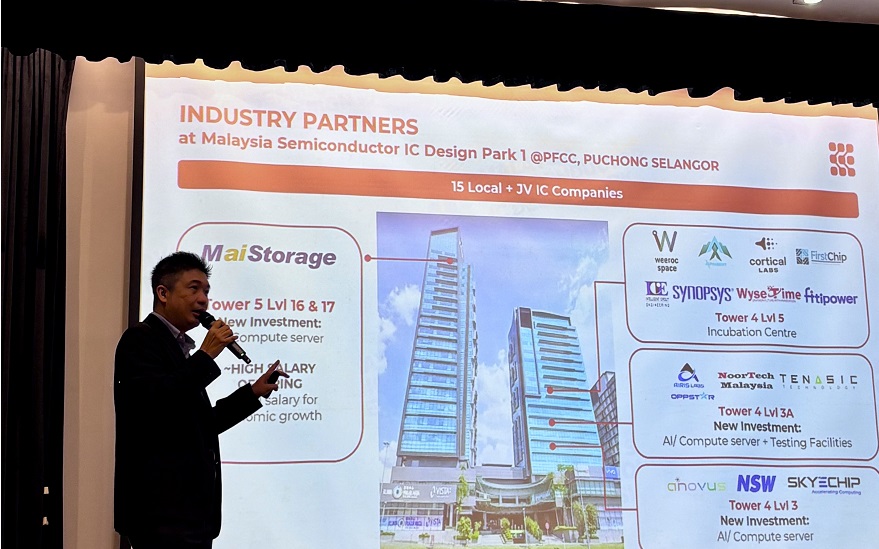
- “Global players often tell us they struggle to find industry-ready talent, so we let them shape the curriculum directly. Companies can monitor training, interview candidates, and secure hires faster, creating a more agile ecosystem for both MNCs and local startups.”
PETALING JAYA (Nov 27): Malaysia is experiencing a major talent boom in the semiconductor sector, with recruitment drives attracting more than 5,000 students across the country.
“Companies aren’t just hiring for Selangor; many candidates are being placed in Penang, Sarawak, and even Singapore, showing how strong the local semiconductor talent pipeline has become,” said Selangor Information Technology & Digital Economy Corporation (Sidec) semiconductor and venture division head Lee Hing Wah at the Industrial Development Roundtable and Masterclass event organised by the Real Estate and Housing Developers’ Association (Rehda) Institute at Wisma Rehda here on Wednesday.
“Global players often tell us they struggle to find industry-ready talent, so we let them shape the curriculum directly. Companies can monitor training, interview candidates, and secure hires faster, creating a more agile ecosystem for both multinational corporations (MNCs) and local startups,” he highlighted during his session entitled “Semiconductors and Industrial Development: Building Malaysia's Next High-Tech Growth Engine”.
Lee said Malaysia’s geopolitical neutrality and stable regulatory environment are turning the country into a “safe haven” for semiconductor investments.
“MNCs from China, Taiwan, Japan, and Korea are expanding or relocating here to avoid tensions in other markets, giving Selangor a steady inflow of new players exploring long-term industrial bases.”
He noted this momentum is accelerating the expansion of the Malaysia Semiconductor IC Design Park.
The first park in Puchong, Selangor reached full capacity within its first year, and the second phase, launched recently in Cyberjaya, Selangor, includes a US$260 million (about RM1.074 billion) partnership with ARM Holdings plc, the world’s leading semiconductor design and IP company whose chip architecture powers most smartphones globally.
“The demand is here, and we need to keep growing the ecosystem to stay ahead,” Lee added.
Malaysia’s data centre growth outpaces green energy options
On the other hand, Malaysia’s data centre growth is outpacing available green energy options, with solar, wind, hydropower, nuclear and hydrogen all facing technical or logistical hurdles.
JLL Malaysia & Indonesia data centre and industrial head James Rix said data centres are energy-intensive, noting that every Google search consumes as much power as a low-energy lightbulb for 17 seconds.
"The energy cost is rarely visible to end-users, so it’s crucial to consider the full impact of data centre operations,” he said during his session on “Data Centres as Growth Engines: How Digital Infrastructure Transforms Industrial Real Estate”.
He added that high-density computing, including artificial intelligence (AI) tools like ChatGPT, further drives power consumption.
"Each rack can draw up to 400 kilowatts, and a typical 60-megawatt facility is equivalent to running tens of thousands of kettles 24/7.”
Rix said achieving net-zero is more about balance than reduction.
"Offsetting emissions does not necessarily reduce overall carbon, so the focus should be on reducing actual emissions, and increasing efficiency where possible,” he said.
He highlighted Malaysia’s challenges in using renewable energy.
"Solar is intermittent, wind speeds are too low, and importing hydropower from East Malaysia adds transmission challenges, while nuclear and hydrogen face regulatory and logistical barriers.”
Rix also stressed the importance of local sourcing, workforce development, and community impact.
"Foreign operators often rely on imported resources, offering minimal local benefit. Sustainable growth depends on training talent, using local suppliers, and integrating facilities responsibly,” he stated.
EdgeProp was the media partner for the two-day event from Nov 25 to 26.
Read also
Industry experts call for faster approvals, clearer processes to boost industrial growth
Unlock Malaysia’s shifting industrial map. Track where new housing is emerging as talents converge around I4.0 industrial parks across Peninsular Malaysia. Download the Industrial Special Report now.





